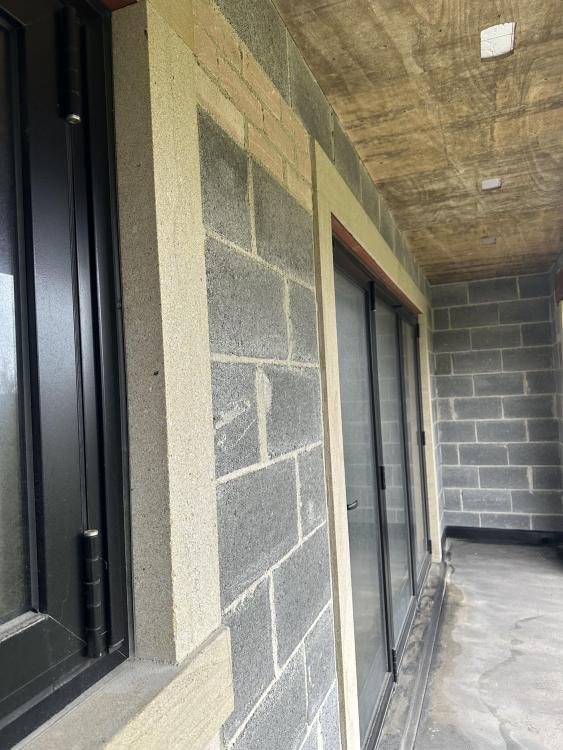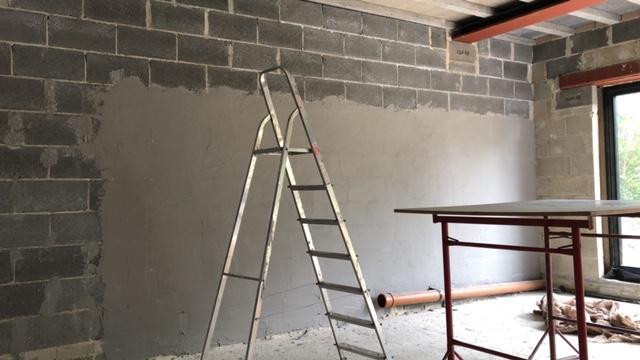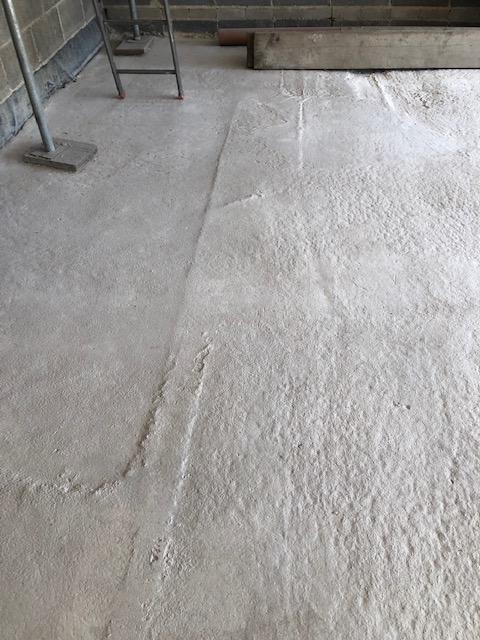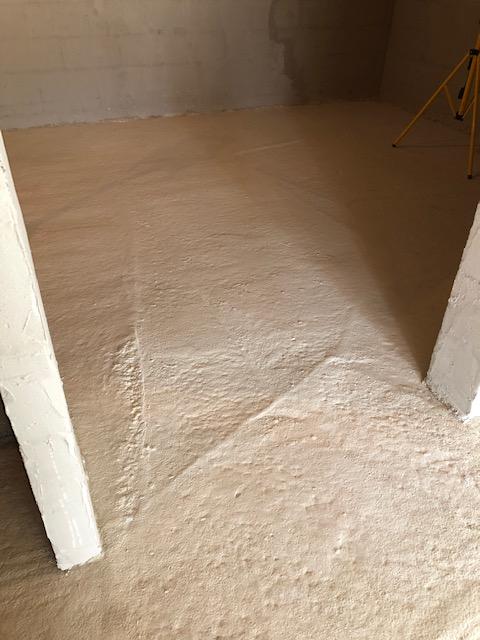
DaveH
Members-
Posts
63 -
Joined
-
Last visited
Everything posted by DaveH
-
Thanks for your comments. I've already spoken with a local fire officer who has been quite helpful but because my design doesn't automatically meet the guidance in Approved Document B1 the local authority Building Control have requested that I appoint a suitably qualified independent fire engineer to design a solution in compliance with BS 7974. The key word here is independent - they want the design to be done by someone without an interest in selling me the solution. I've been in contact with a few companies I've found through Google but if anyone has any recommendations I always prefer that.
-
Can anyone recommend a fire engineering service to look at designing a fire solution for a property that won't initially satisfy Part B if I want to keep the open plan nature of the design? The property is built into a slope and on the tall side I have 2 bedrooms that will be over 4.5m from ground level without a protected stairwell. The other 2 bedrooms on that floor will be under 4.5m from ground level. I have looked at smoke extraction units, fire curtains, sprinklers and mist systems but building control won't offer advice and have asked for any proposed solution to be designed and 'justified' by an independent fire engineer. I'm West Yorkshire based so looking for someone that will cover this area. Thanks
-
Thank you
-
This is one of the sections to be rendered. Hopefully you can see that the stonework has been set proud approx 15mm from the blockwork.
-
Hi, can anyone advise the best way to neatly render up to cut stone please? I have a section of blockwork that needs rendering and the window and door openings have stone jambs, heads and cills that have been set proud of the clockwork ready to render up to. Is it just a case of being very careful and neat? Should the stone be masked? Is there a bead for this job? Thanks
-
Hi all, Just trying to work out the depth of insulation I can achieve under my UFH. This may be a daft question but does the finished flooring (probably tiles) finish level with the stone sill, or does the screed normally finish level with the sill and the flooring is on top of this butting up to the sill in the doorframe? Thanks
-
Thanks all. I shall do some more research. I see there are some sytems out there that allow tiling to be directly bedded onto the membrane rather than using pedestals. Any pros and cons to this?
-
Thanks for the input. Do you know if there are any shallow pedestals? The original builder didn't construct the balcony area as per plans and I don't have as much height as I should have. It's not insurmountable but I'm trying to keep the build up as shallow as possible to allow more insulation. I do have space underneath (above the living space ceiling) to add more insulation.
-
The building is traditional block and stone construction. The floor construction for the balcony (and that entire floor) is block and beam.
-
I have a small roof terrace area under construction which I would like to tile eventually. The latest roofer to have a look initially suggested using a rubber membrane for the waterproofing layer rather than fibreglass etc, but has now suggested I would be better off using asphalt. This is something he doesn't do so I would need to find a different company for this. Does anyone have any opinions regarding the best construction methods for a roof terrace with a flagged/tiled finish? The area I am getting quotes for is 8m long x 1m wide and is for an inset balcony with a roof over. It gets very little rain or weather. Thanks
-
Got it. Thanks Mark
-
Thanks again. Excuse my ignorance but is a frame fixing different to a plastic hammer fixing? I thought they were different names for the same item as below: https://uk.rs-online.com/web/p/frame-fixings/5146577/?cm_mmc=UK-PLA-DS3A-_-google-_-CSS_UK_EN_Fasteners_%26_Fixings_Whoop-_-Frame+Fixings_Whoop-_-5146577&matchtype=&pla-336892306686&gclid=EAIaIQobChMIuOmqoMKW7gIVugYGAB1WeQokEAQYAyABEgJUYPD_BwE&gclsrc=aw.ds https://www.screwfix.com/p/easyfix-nylon-hammer-fixings-8-x-120mm-10-pack/19157?tc=UA3&ds_kid=92700048793290424&ds_rl=1249413&gclid=EAIaIQobChMIuOmqoMKW7gIVugYGAB1WeQokEAQYBCABEgIV0PD_BwE&gclsrc=aw.ds
-
Thanks for the reply. To be honest I was going to use frame fixings to fix the battens through the insulation and into the blockwork. Maybe I'm overthinking it (wouldn't be the first time!) but I was wanting something to 'glue' the insulation to the blockwork first and hopefully have a bit of give so I can make sure the sheets are nice and true as you would when installing plasterboard with dot and dab.
-
Hi all, What options do I have for fixing foil backed PIR boards to internal masonry? I'm intending to batten over the top and screw plasterboard to the battens but what is considered best practice for fixing the PIR to the masonry? Googling and searching forums seems to give different opinions on foam or whether board adhesive will work with foil backed sheets. One of these options would be ideal as I could then cover any discrepancies in the walls so that the PIR is installed nice and flat before battening. Thanks
-
So it would be an option to run several lengths (?) of T&E from loft space to plant room and have the inverters in the loft? Any advantages/disadvantages to each system?
-
Thats great, thanks. The CU is in the plant room so no issues there. If I speak to my local electrical merchant and ask for '6mm DC solar PV cable' I assume they will know exactly what I need?
-
My plans don't currently include PV panels but during the construction I thought it would be prudent to put some infrastructure in incase I decide to add them at a later date. Is it as simple as putting in some cable from the loft area to the plant room and if so what size and type of cable would I need? I am on 3ph mains if that makes any difference. Thanks
-
Can anyone recommend companies that can offer advice and design on heating, cooling and ventilation systems that will work well together. The house is a traditional construction new build over three levels with a combination of wet UFH and radiators and planned for a gas boiler. I will be installing MVHR and have also been considering air conditioning. There are lots of companies with expertise in one particular area but is there anyone that can look at the whole solution to make sure everything will work well together? Thanks
-
Does anyone have any photos or diagrams of the floor build up detail in external door openings please for a traditional block and stone construction? Just wondering whether the insulation and screed runs right to the cill on the external leaf (with a DPM in between) or whether the inner leaf is built up to floor level? The builder that constructed my shell has left one opening built up and two open to the external cill. He is no longer working on the project. Thanks
-
A variation on the floor glue/screw conundrum.
DaveH replied to epsilonGreedy's topic in Floor Structures
I'm in the process of applying parge coat to my walls at the moment. It's easy enough to apply with a hawk and trowel and doesn't need to be too smooth as it will be boarded over and covered up. Like plaster (or any gypsum product) the shelf life isn't very long so only buy when you're ready to use it. I negotiated Gyproc Soundcoat for £5.80 per bag from CCF. -
Thanks, there will definitely be a service void between the beams and the ceiling below but I was more wondering about the detail where things like cables will pass through. It will be easier for me to group rings and lighting circuits together and then pass them through the block in a group in a conduit/duct of some kind. And pipes for water supply, underfloor heating etc - should I sleeve them where they pass through the block?
-
My first floor is block and beam with a habitable ground floor area below it containing kitchen and living space. What do I need to consider when running services between the floors - MVHR ducting, cables, pipes etc? I was thinking of casting some ducts into the floor in the appropriate areas (mainly above the utility/plant room) to run all the services through. Is this the norm? Obviously I will keep hot and cold pipes apart, electricity and data cables apart. I assume i will need some kind of intumescent seal in case of fire? Anything else to consider? Thanks
-
Thanks all. I think I'll go with a combination of grinding off the worst of the ridges and a sprinkling of sand under the PIR.
-
I have a similar problem with my concrete slab in that it is very rough. I have raised ridges as well as some depressions and I am concerned they are too big to just leave - there will be a large amount of rocking and some areas where the insulation is not properly supported. I was wondering the most suitable (and cost effective) way to level the worst of this before I lay the sheets of PIR. It's actually worse than the photos make out. Would a sand and cement slurry work? Or a thin sand blinding? Or would i need a proper levelling compound? Obviously it's only to get it somewhere close to level before I lay the insulation. There will be a 50mm liquid screed being laid on top.
-
Exactly that @Mr Punter Top man!






